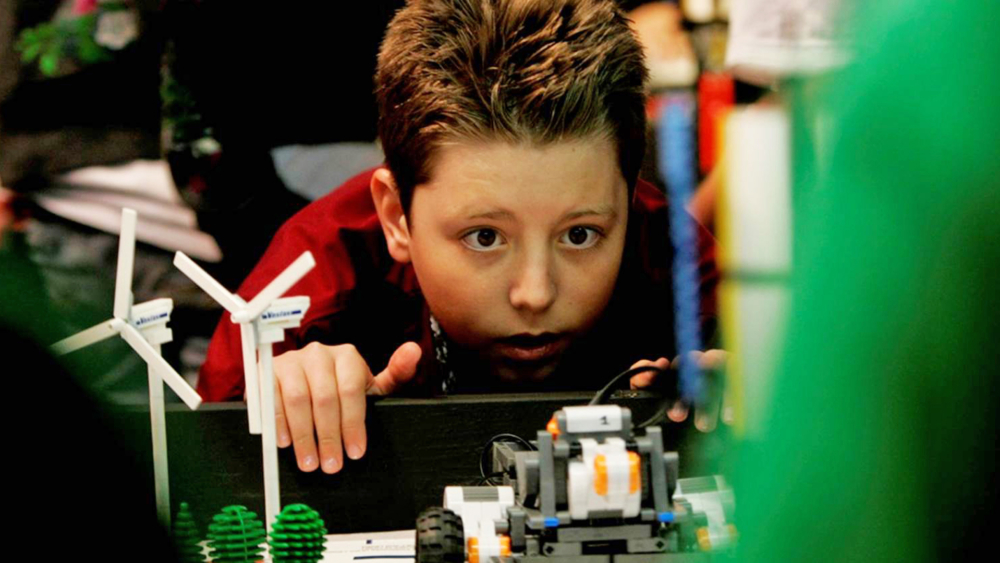
STEMming Something STEAMy
The high school graduation program in Texas changed with the 2014-2015 incoming freshmen, and provides for flexibility and student choice. Under House Bill 5 (HB 5), students must fulfill the requirements of the Foundation High School Program; however, they also have options, and are allowed to pursue interests in five different areas, identified as endorsements: STEM; Business & Industry; Public Service; Arts & Humanities; and Multidisciplinary Studies. While an endorsement is not a requirement in order to graduate, most students will achieve at least one endorsement. Science, Technology, Engineering and Mathematics (STEM) have become much more than a trend. The content of these four areas will drive much of the future careers of our students, as we are teaching and preparing for something that we cannot yet envision. That is the beauty of education ' shaping the minds of the future, knowing they will shape the future of our democracy.
The STEM endorsement is the only endorsement that currently requires upper level math and/or science. While school districts have some flexibility in providing the courses that best meet the needs of their community, and reflect the interests of their students, it is clear that students pursuing this endorsement are serious about their education, and are not fearful of difficult tasks. They are generally analytical thinkers, and will make their impact on the world by their logical inquisitive nature. They are our future chemists, geologists, energy harvesters, and doctors ' just to name a few. They will change the landscape of America with their new discoveries and patents that we cannot yet fathom. '
Students tend to thrive in the spaces in schools that support their interests. What was your favorite physical space in high school? For some of us, it was the football field, or the band hall. For others, it was the Chem lab, or Drafting class. Purposeful environments with specific and intentional expectations provide the most meaningful learning spaces. When designing for STEM spaces, it is important to always think of the end users: teachers and students. They both have particular needs in order to facilitate the curricula and engage in the work.
Consider Pedagogy
Teaching in a STEM-related course requires an inquiry- based approach to learning where teachers must be able to move about, easily allowing students to work in groups, and/or independently, with ample technology support. Both small and large spaces are required, with the flexibility for students to focus and research, as well as to discuss and present findings. Teachers need areas that allow teaching to occur as it is needed, meaning 'just in time' lessons for a small group needing a deeper understanding of a concept, or a large space to launch a new challenge. Well-designed lessons for these four disciplines also require significant materials, so storage is crucial. So is technology support, as research is crucial to the learning process and may need to be accomplished throughout a unit, rather than in one setting in a traditional computer lab. Extension of the classroom allows teachers to group students strategically so that ample space is achieved between groups. This can be accomplished by use of square footage that spills over into the hallways, or pushes past the traditional walls of the classroom. Teachers always need more space, and the more rigorous the curriculum, the more creative the learning outcomes.
Student-Centered Focus
Students must be allowed the freedom and flexibility to use tools as they apply them to the curricula. They need space on their desk, now designed as a flat surface, to be able to draw things, think visually, and solve small problems that will result in an overall answer or project response needed for the larger expected learning outcome. They also need space to formalize their work. Depending on the assignment, independence may be expected, or the unit may result in the outcome of a group project. In both cases, space is needed to demonstrate learning. Makerspaces, labs, and studios that most closely resemble a real work atmosphere support the learning environment. This type of designed space is important for creativity to abound. Producing a variety of spaces makes learning interesting, and offers students choice in how to best support their individual learning styles and needs.
The spaces for student learning in either a STEM or STEAM environment must be supportive of the learner, and should emulate industry. Moreover, they must support the pedagogy of these disciplines, and the integration of content will produce the best opportunity for learners. Well-designed spaces consider the curricular areas independently, but also recognize the natural interdisciplinary nature that also exists, and will continue to progress with the evolution of curricula. As we work to prepare students for college and career, the more we can create spaces that are designed like, and align with a student's future place of employment, the more we directly contribute to the learning process and help students see future opportunities. Thoughtfully designed spaces help to provide a unique opportunity for a learning experience that may assist in recruitment in these fields, and lead to college enrollment and/or industry certifications while supporting talents.